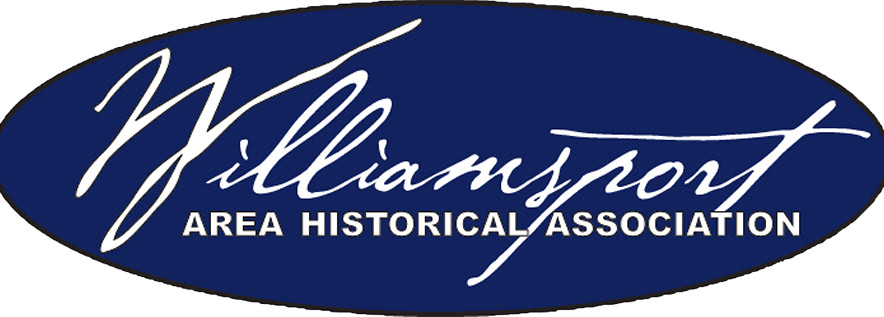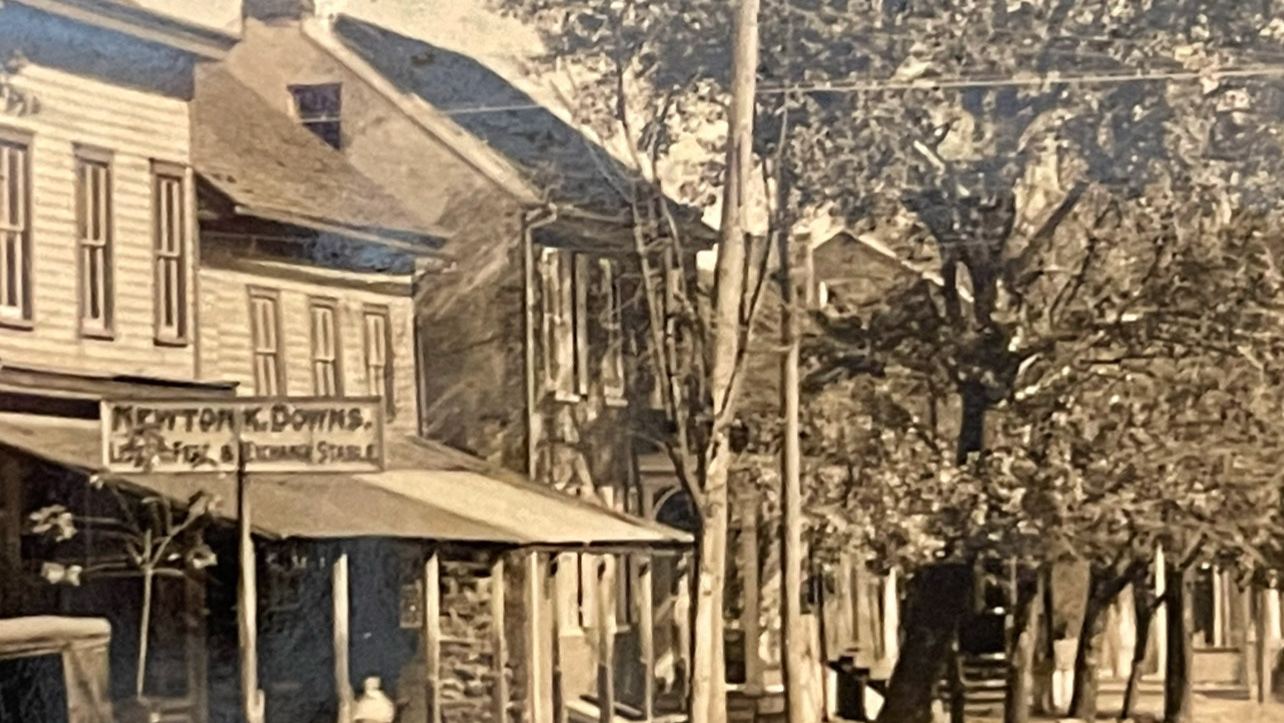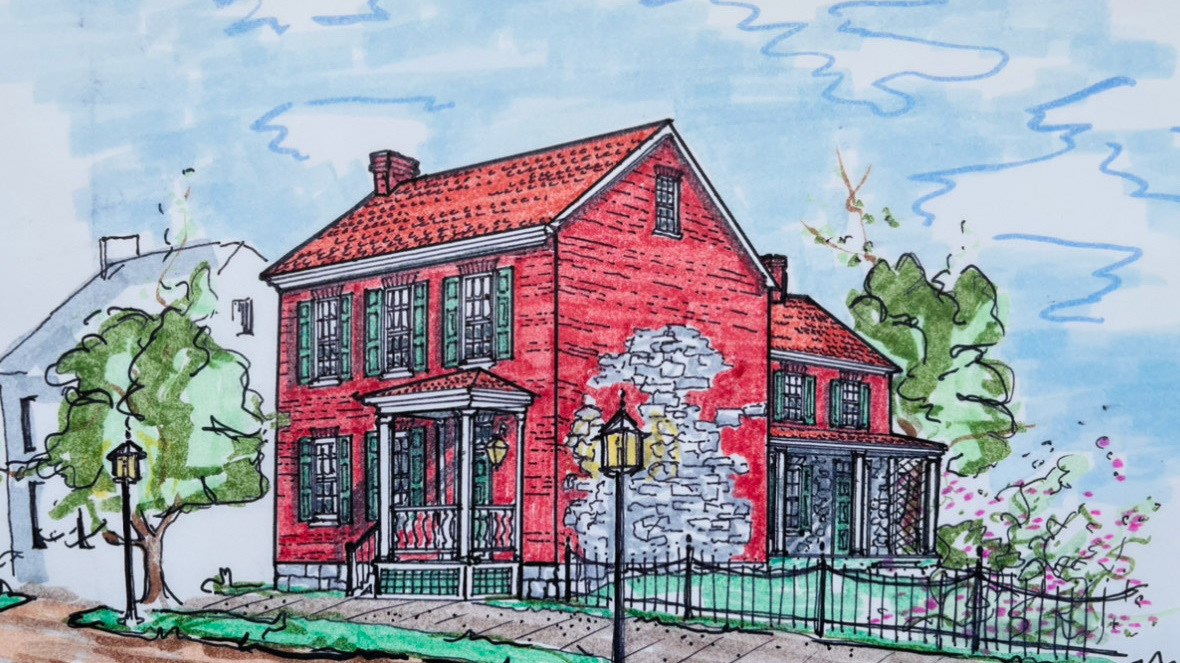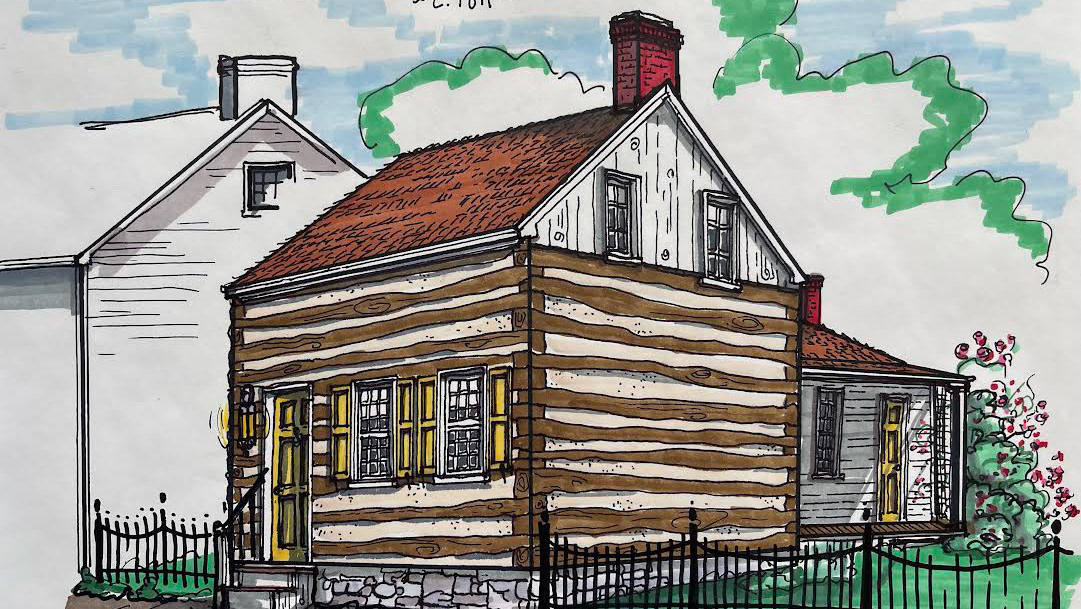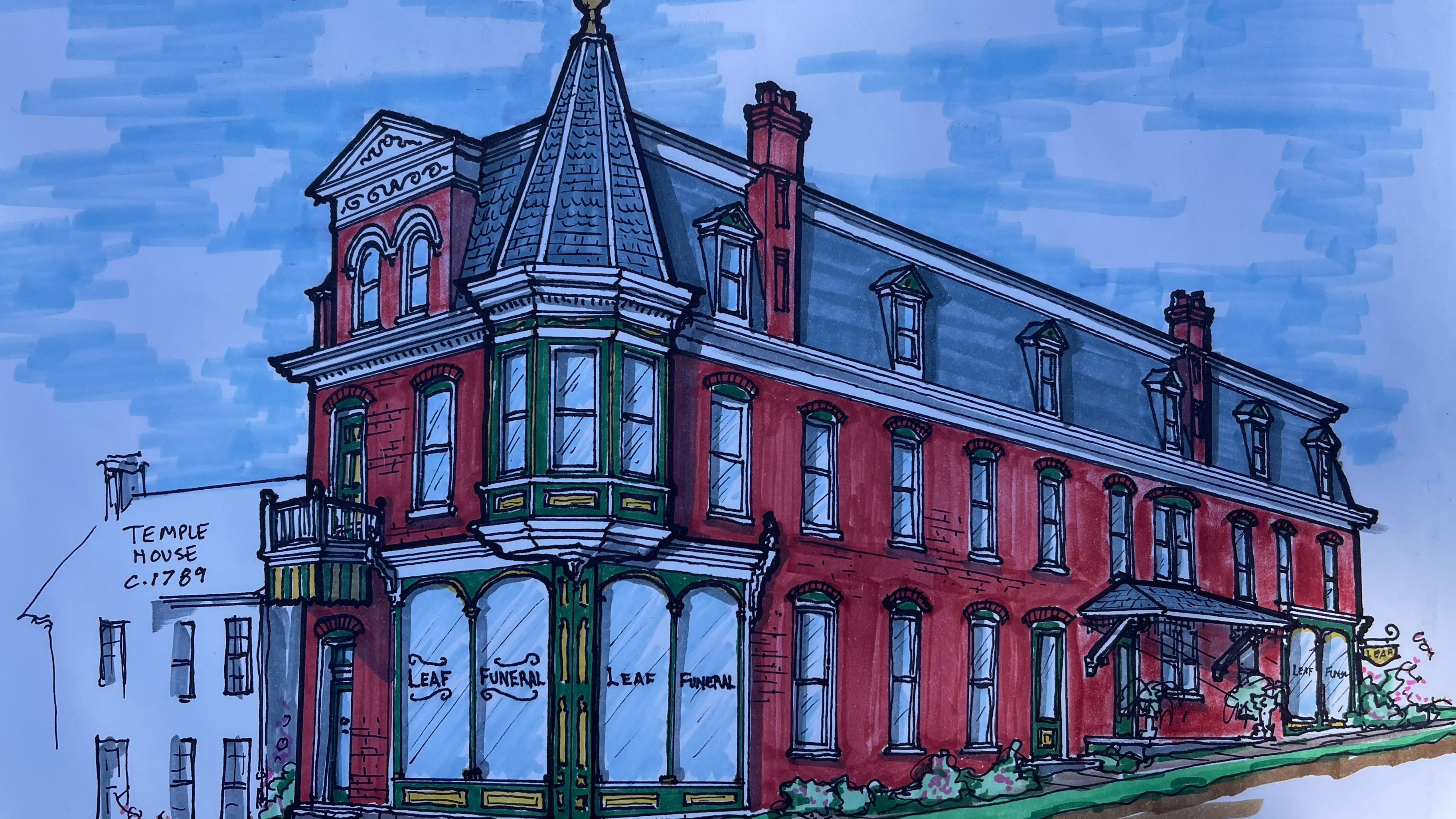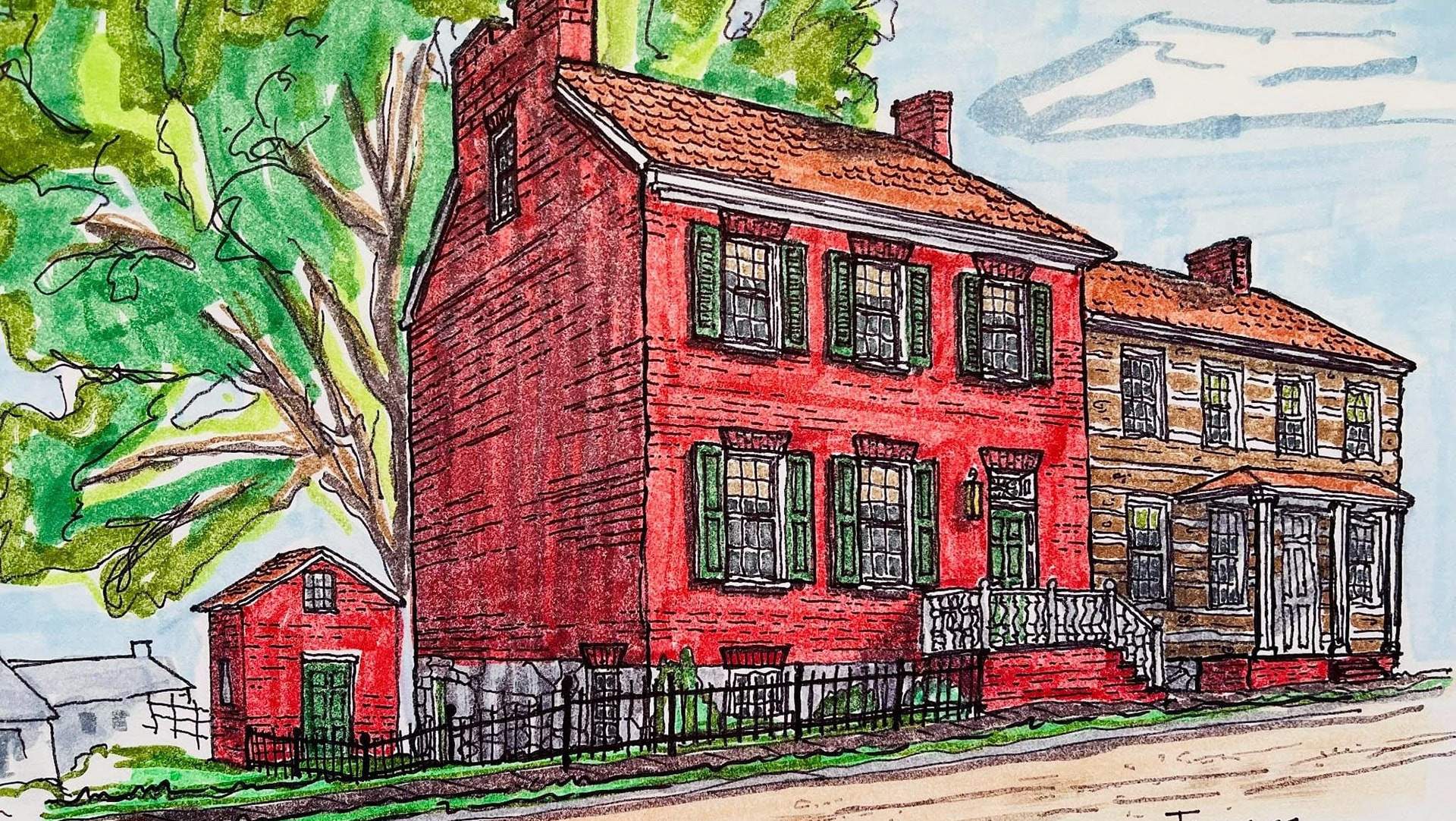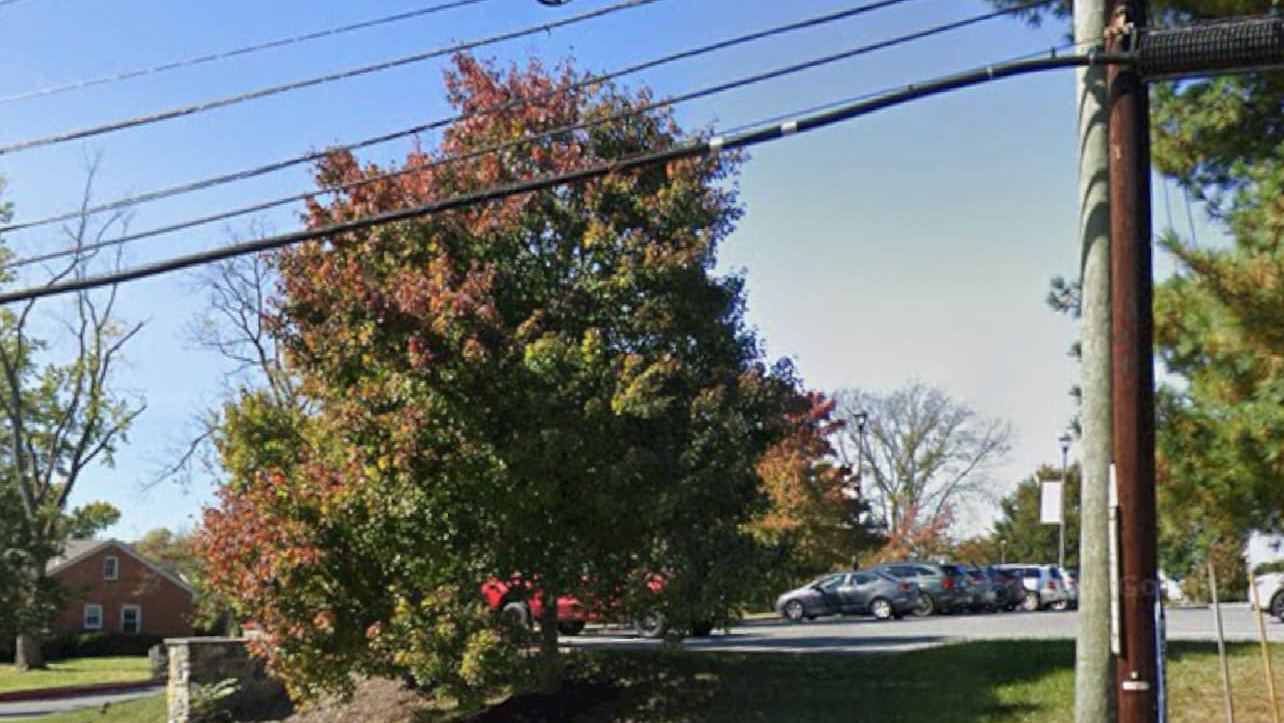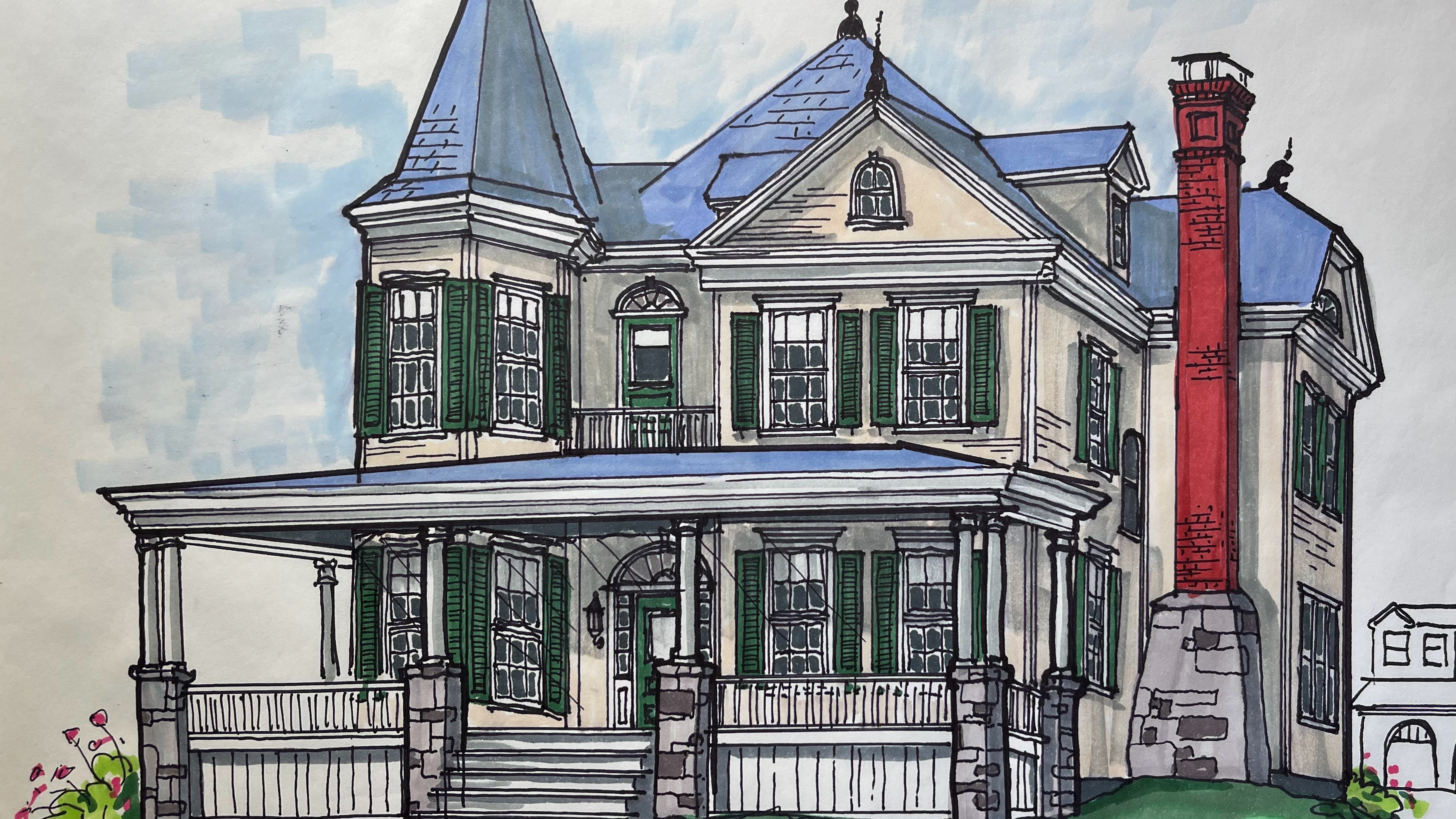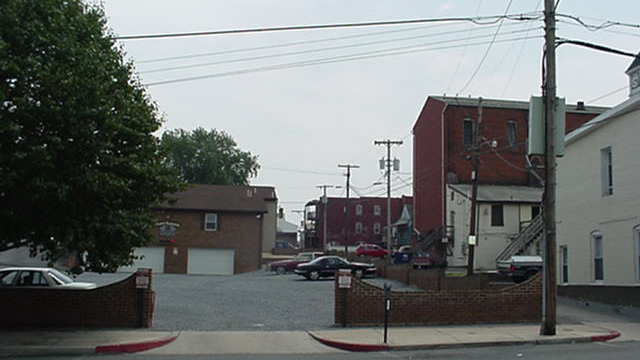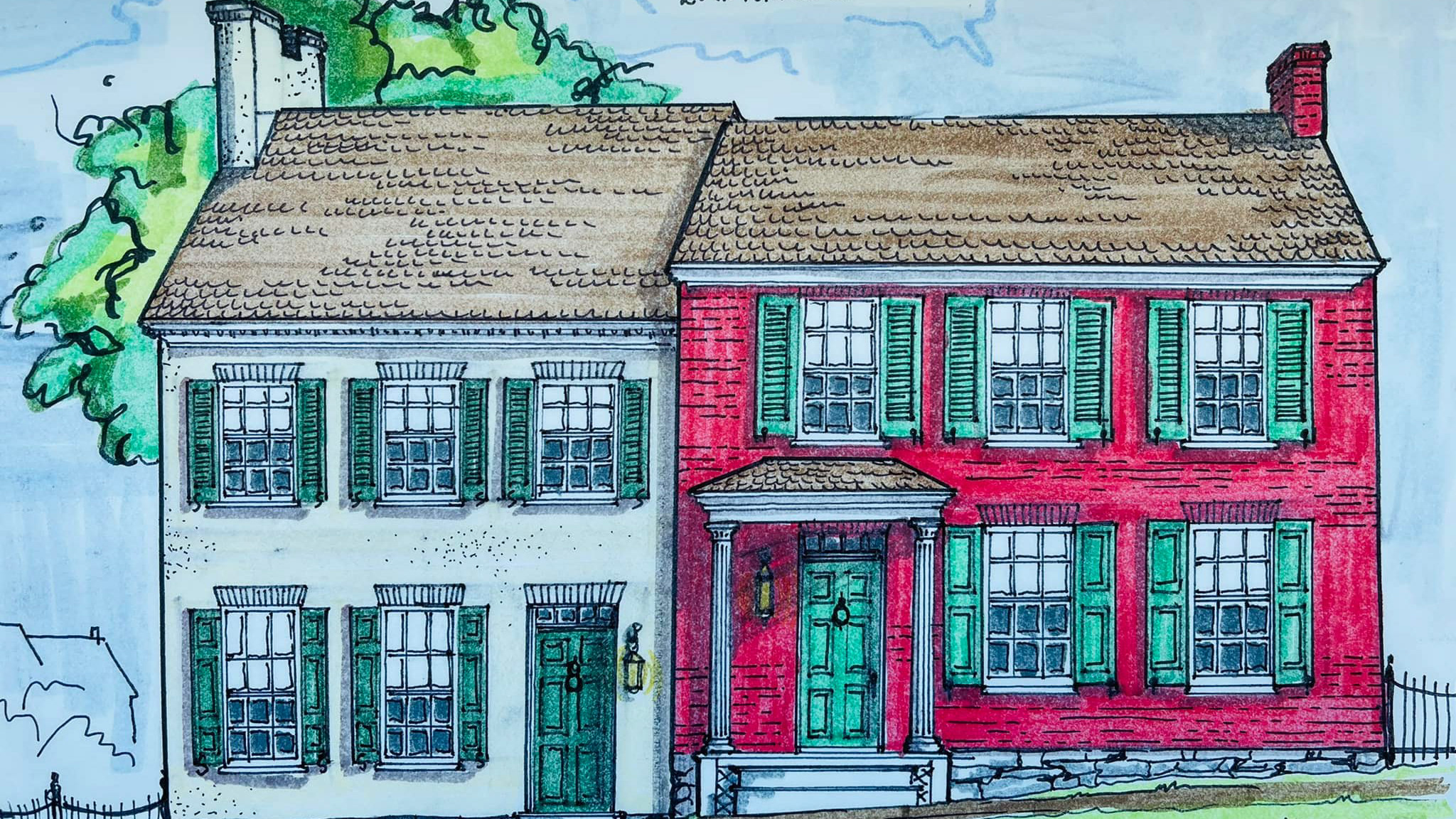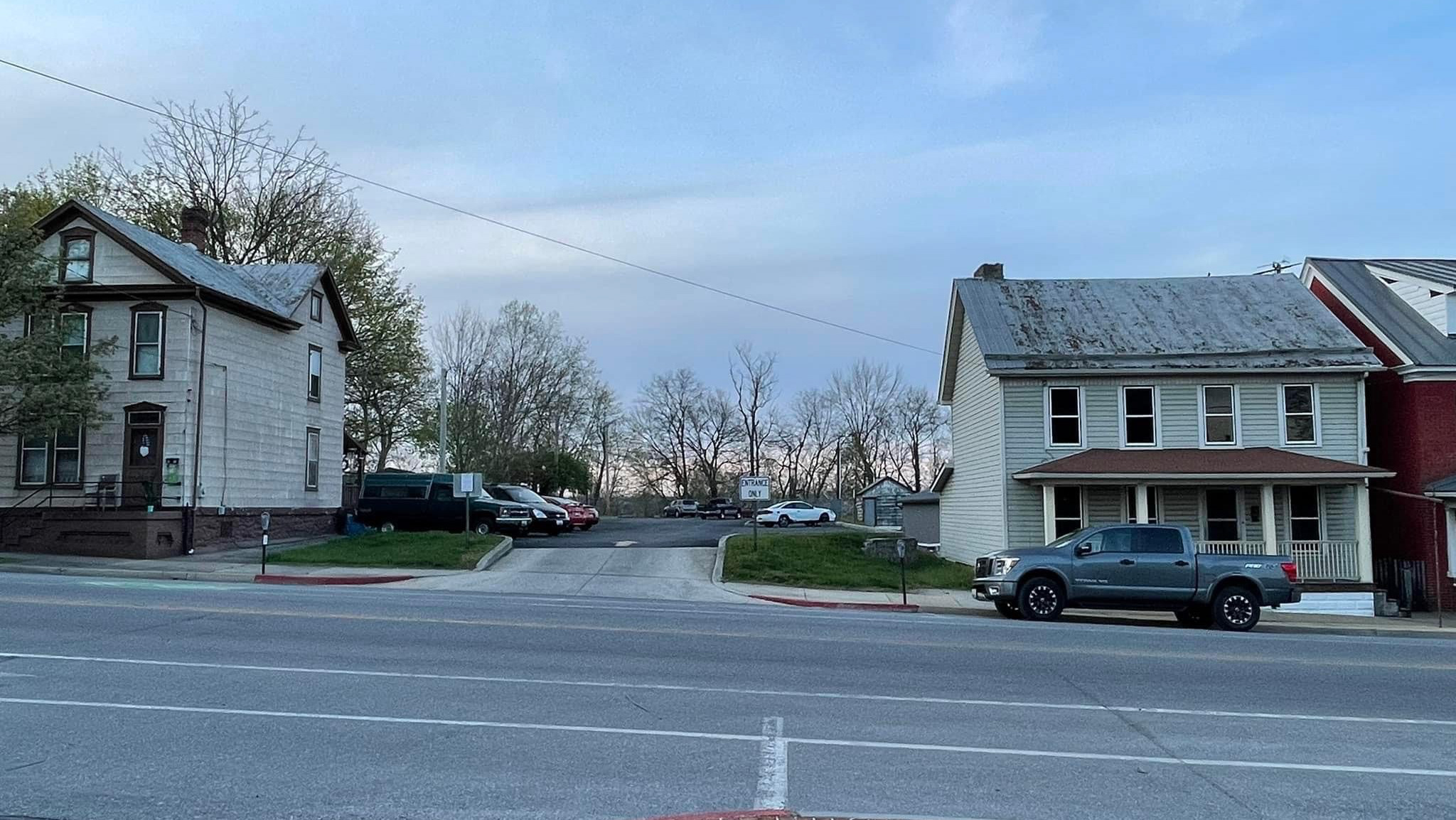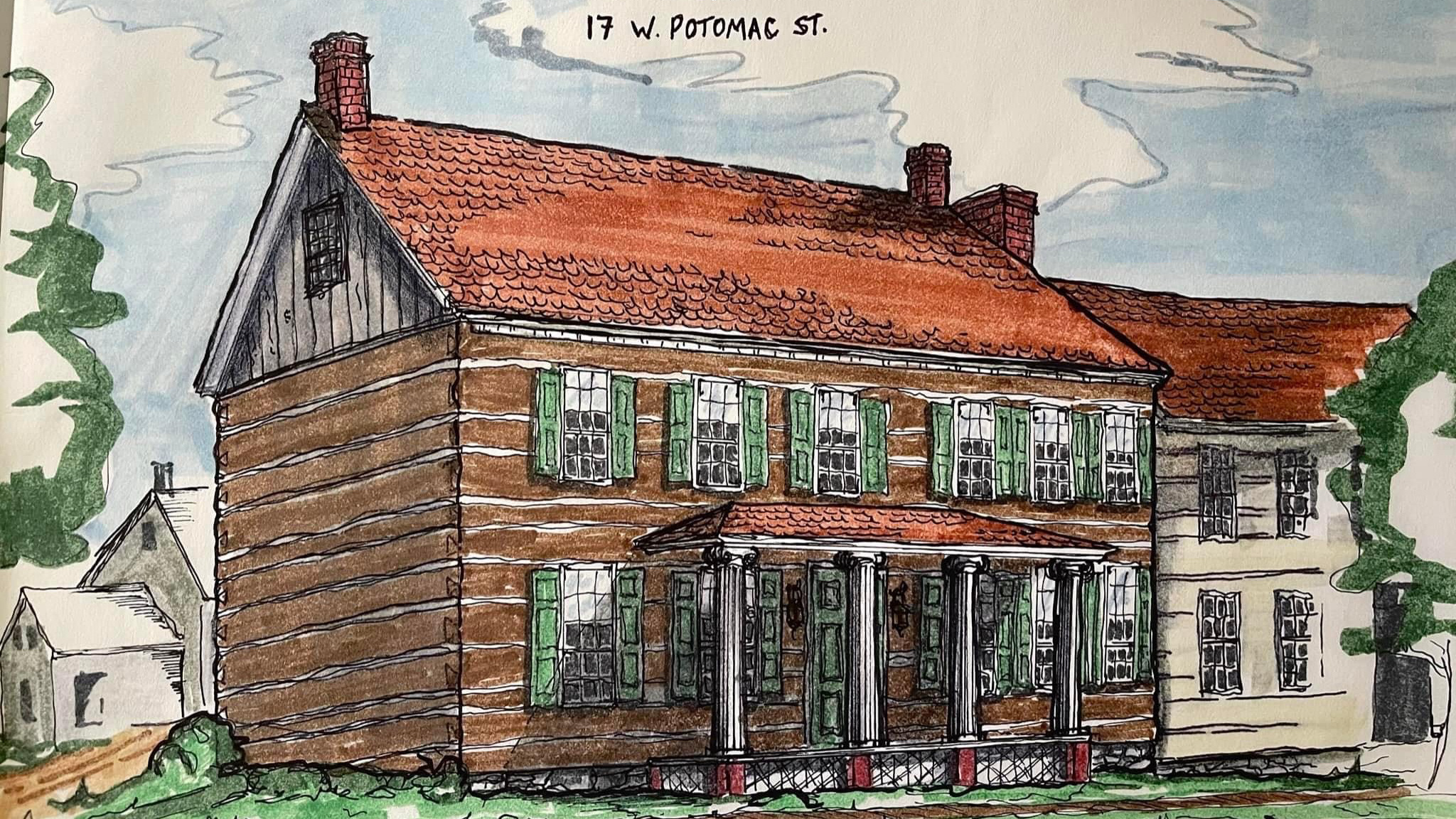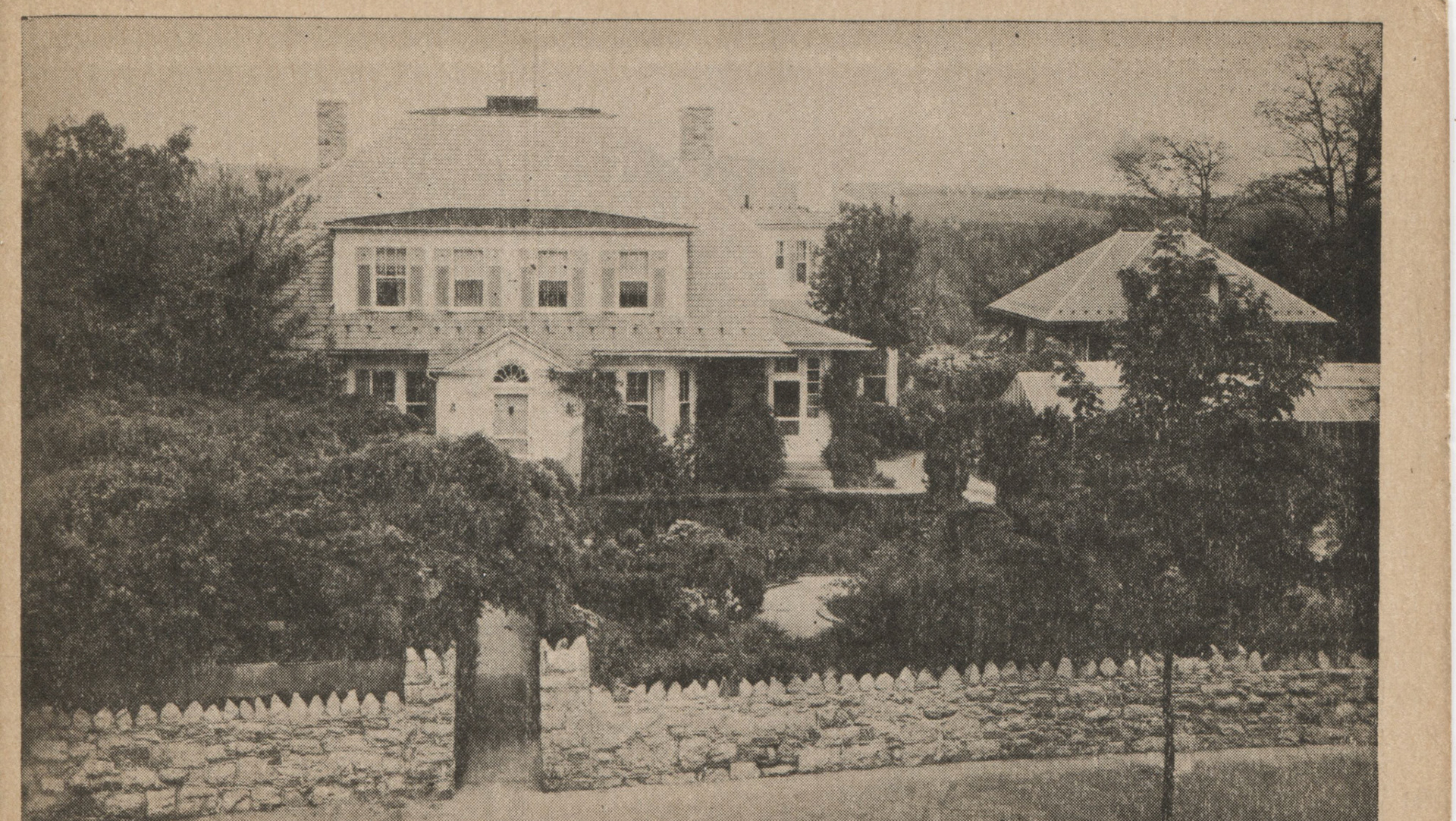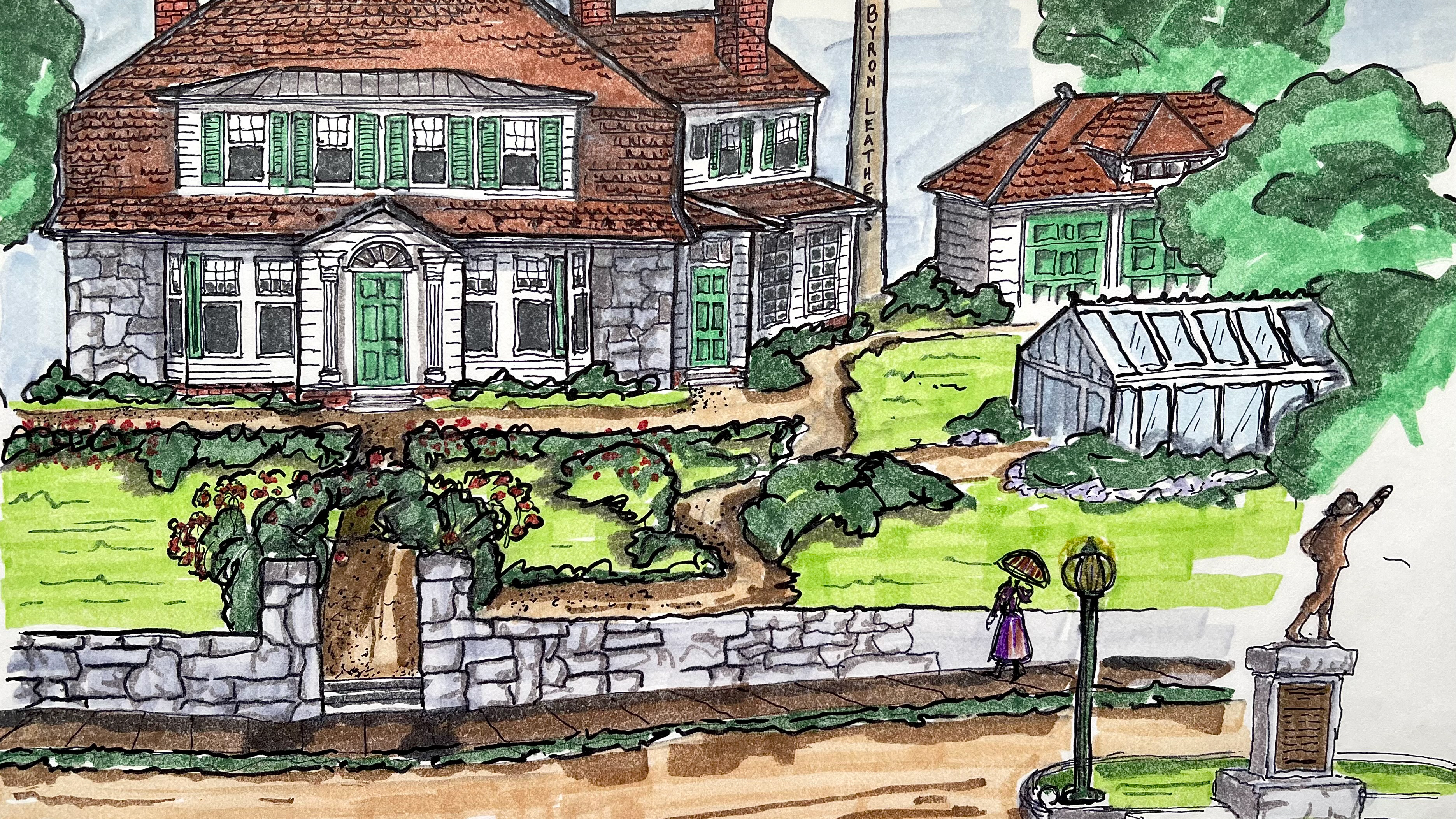On the south side of West Salisbury Street, next to the current Post Office, once sat a charming log cottage. The Georgian-inspired residence had the proportions of a Maryland tidewater house, a rare form here in Washington County. The house was covered in German siding and ran north to south on the lot. A massive brick chimney split the roofline in the center, undoubtedly employing at least four fireplaces to heat the modest home.
Henry Startzman leased original lot 82 of Williamsport from the estate of Otho H. Williams in 1797. As with most of the Williamsport leases, this lease also required a building, fences, etc., to be erected within three years. The lease indicated the lot was vacant in 1797.
Henry Startzman leased original lot 82 of Williamsport from the estate of Otho H. Williams in 1797. As with most of the Williamsport leases, this lease also required a building, fences, etc., to be erected within three years. The lease indicated the lot was vacant in 1797.
The Startzman Family was residing in Washington County near Williamsport by the 1750s. The family received a land grant of 100 acres from Lord Baltimore in 1751 called "Startzman's Share ."It would take further research to know exactly where the Startzman home farm was, but we know it was close, probably near Hagerstown. Documents residing within the collection of the Sons of the American Revolution and other historical repositories show that Henry Startzman (1746-1811) was appointed by the Committee of Observation in the early days of the War of Independence to "relieve inhabitants after the Militia had marched ."In other words, Mr. Startzman would supply grain and other supplies to citizens and soldiers alike after supplies had been taken or depleted by the marching militia.
Supplies from the farm in Washington County were sent to towns such as Annapolis and Baltimore to aid in the war effort. It is not believed that Henry lived in Williamsport, but perhaps the house was used as a tenant house or the home for a family member in budding Williamsport. Henry passed in 1811, and in 1813 the estate sold the property to Christopher Trovinger for $177.17. While not overly significant, this price definitely showed some considerable improvement as empty lots were selling for $5.
Supplies from the farm in Washington County were sent to towns such as Annapolis and Baltimore to aid in the war effort. It is not believed that Henry lived in Williamsport, but perhaps the house was used as a tenant house or the home for a family member in budding Williamsport. Henry passed in 1811, and in 1813 the estate sold the property to Christopher Trovinger for $177.17. While not overly significant, this price definitely showed some considerable improvement as empty lots were selling for $5.
Christopher Trovinger was also involved in the Revolutionary War, serving as a soldier in the Ninth Battalion out of Lancaster from 1777-1780. Born in 1753 in Germany, Christopher immigrated to the then British-controlled colonies only to soon fight for the independence of our nation a few years later. Christopher and his wife Barbara only owned the house for six years, likely also using it as an investment when they sold it in 1819 to Joseph Hollman and his wife Catherine Steffey Hollman for $210.
Joseph and Catherine were born in 1790 and 1791, respectively, and shortly after marrying purchased this property to set up a home. Catherine was born into the Steffey family of Williamsport, who settled here in the 1780s and would go on to live in the Banking Mansion and start Steffey-Findlay, which is still in operation today in Hagerstown. Joseph was also a war veteran, having served in the War of 1812. Joseph was an intelligent, dynamic man. He owned a construction company that built Dam 4, several locks on the C&O canal in the 1830s, and owned a mill near lock 44. He was commissioned to build the lock house at Lock 44, but never did. He also was in charge of keeping Lock 44. Joseph was heavily involved in the Cholera epidemic of 1831-1832 as he supervised the workers building the canal and was commissioned to help build hospitals from Point of Rocks to Harpers Ferry to Williamsport after the outbreak.
Joseph and Catherine were born in 1790 and 1791, respectively, and shortly after marrying purchased this property to set up a home. Catherine was born into the Steffey family of Williamsport, who settled here in the 1780s and would go on to live in the Banking Mansion and start Steffey-Findlay, which is still in operation today in Hagerstown. Joseph was also a war veteran, having served in the War of 1812. Joseph was an intelligent, dynamic man. He owned a construction company that built Dam 4, several locks on the C&O canal in the 1830s, and owned a mill near lock 44. He was commissioned to build the lock house at Lock 44, but never did. He also was in charge of keeping Lock 44. Joseph was heavily involved in the Cholera epidemic of 1831-1832 as he supervised the workers building the canal and was commissioned to help build hospitals from Point of Rocks to Harpers Ferry to Williamsport after the outbreak.
Joseph and Catherine Hollman also owned the Globe Tavern on Conococheague St, which was somewhere in the vicinity of Salisbury and Concococheague Streets in the 1830s-40s. Joseph served as the 3rd Mayor of Williamsport from 1831-1832. Just after purchasing the house and lot in 1819, Joseph and Catherine built a larger log residence on the western portion of the lot to house their growing family. That house still stands today beside the old Ambulance Garage (that garage replaced the small log house detailed in this submission). Joseph passed in 1848 and Catherine in 1862 after suffering terribly from Rheumatism which rendered her housebound. Catherine left the property to her daughter Ellen, who died very young. Ellen left the house to sister Margaret Porterfield who left it to her children, including Frank Porterfield of Washington, DC. Mr. Porterfield sold the property to Anna Rhodes in 1941. The Hollman family and descendants owned the two homes for 122 years.
An old newspaper clipping from the 1960s, stated that the old building was used as a hall for the Freemasons at some point. The Rhodes family split the lot and sold the eastern portion to make way for a garage for the ambulance. The same article goes on to detail how the town intended to use the old building as a museum. The article states as it was one of the oldest surviving buildings in town, which it certainly was. Sadly, with no ability to move the 165-year-old building, it was bulldozed to make way for the garage. The garage was eventually sold to a private company and is for sale once again.
If the old home had been saved, it would have turned 225 this year. While not all buildings can be saved, it's vital to our town's future that we research and have plans in place when one of our valuable historic buildings comes under threat. Adaptive reuse, restoration, or in some cases, saving facades or exteriors should be considered as alternatives to demolition. Williamsport's history is important and should be protected.
If the old home had been saved, it would have turned 225 this year. While not all buildings can be saved, it's vital to our town's future that we research and have plans in place when one of our valuable historic buildings comes under threat. Adaptive reuse, restoration, or in some cases, saving facades or exteriors should be considered as alternatives to demolition. Williamsport's history is important and should be protected.
